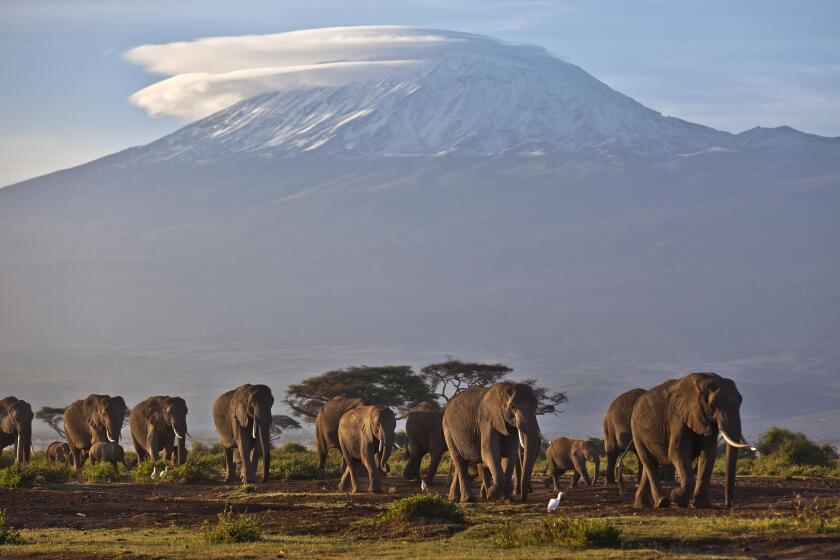Greenhouse gas concentrations hit a new record in 2020 despite pandemic lockdowns

- Share via
GENEVA — Greenhouse gas concentrations hit a new record high last year and increased at a faster rate than the annual average for the last decade despite a temporary reduction during pandemic-related lockdowns, the World Meteorological Organization reported Monday.
In its annual report on heat-trapping gases in the atmosphere, the United Nations weather agency also pointed to signs of a worrisome new development: Parts of the Amazon rainforest have gone from being a carbon “sink” that sucks carbon dioxide from the air to a source of CO2 because of deforestation and reduced humidity in the region, it said.
According to the report, concentrations of carbon dioxide, methane and nitrous oxide were all above levels in the pre-industrial era before 1750, when human activities “started disrupting Earth’s natural equilibrium.”
The report’s release came days before the start of the U.N. climate change conference in Glasgow, Scotland. Many environmental activists, policymakers and scientists say the Sunday through Nov. 12 event, known as COP26 for short, marks an important and even crucial opportunity for concrete commitments to the targets set out in the 2015 Paris climate accord.
“The Greenhouse Gas Bulletin contains a stark, scientific message for climate change negotiators at COP26,” World Meteorological Organization Secretary-General Petteri Taalas said of his agency’s report. “At the current rate of increase in greenhouse gas concentrations, we will see a temperature increase by the end of this century far in excess of the Paris agreement targets of 1.5 to 2 degrees Celsius [2.7 to 3.6 degrees Fahrenheit] above pre-industrial levels.
“We are way off track,” he said.
Prime Minister Scott Morrison wants to take a more ambitious plan to reduce Australia’s greenhouse gas emissions to the U.N. climate change summit.
The report draws on information collected by a network that monitors the amount of greenhouse gases that remain in the atmosphere after some quantities are absorbed by oceans and the biosphere.
“One of the striking messages from our report is that the Amazonian region, which used to be a sink of carbon, has become a source of carbon dioxide,” Taalas said. “And that’s because of deforestation. It’s because of changes of the global local climate, especially. We have less humidity and less rainfall.”
Oksana Tarasova, chief of the WMO’s atmospheric and environment research division, said the results showing the Amazon going from sink to source were a first, but she noted that they were from a specific southeastern portion of the Amazon, not the entire rainforest.
The global average of carbon dioxide concentrations hit a new high of 413.2 parts per million last year, according to the WMO report. The 2020 increase was higher than the annual average over the last decade despite a 5.6% drop in carbon dioxide emissions from fossil fuels because of COVID-19 restrictions, WMO said.
Africa’s rare glaciers, such as the one on Mt. Kilimanjaro, will disappear in the next two decades because of climate change, a new report warns.
Taalas said a level above 400 parts per million — which was breached in 2015 — “has major negative repercussions for our daily lives and well-being, for the state of our planet and for the future of our children and grandchildren.”
Human-incurred carbon dioxide emissions, which result mostly from burning fossil fuels like oil and gas or from cement production, amount to about two-thirds of the warming effect on the climate.
The WMO said that, overall, last year’s pandemic-induced economic retreat “did not have any discernible impact on the atmospheric levels of greenhouse gases and their growth rates, although there was a temporary decline in new emissions.”
More to Read
Sign up for Essential California
The most important California stories and recommendations in your inbox every morning.
You may occasionally receive promotional content from the Los Angeles Times.















